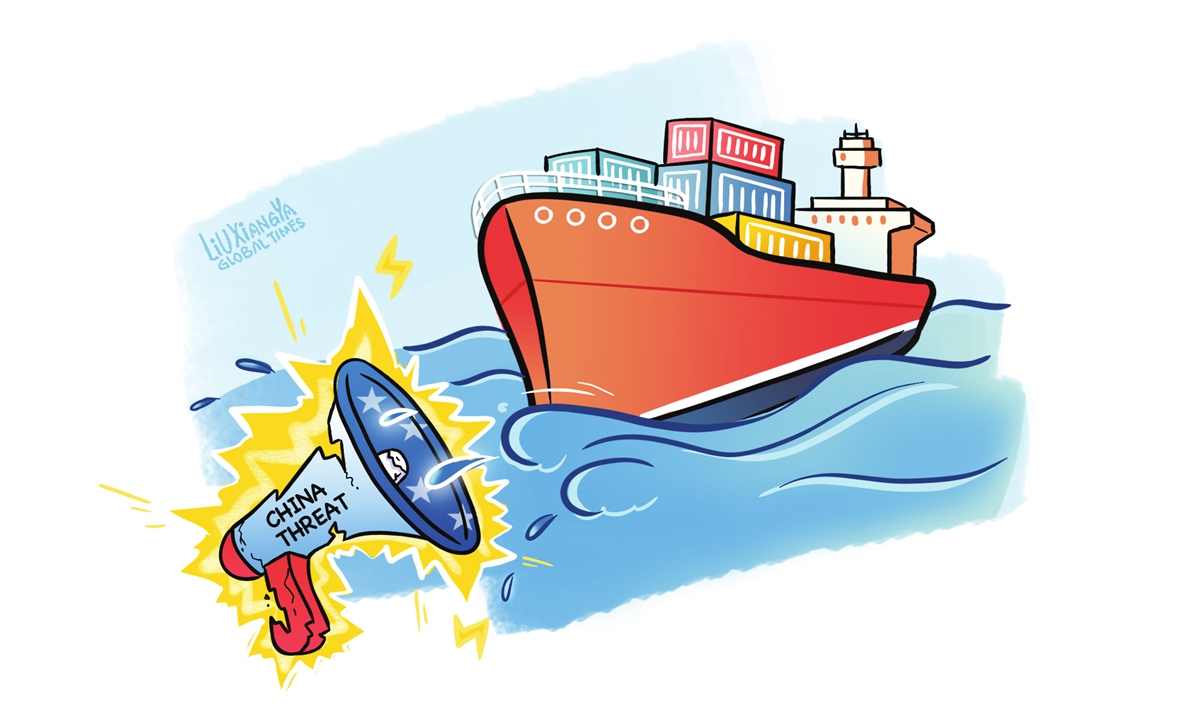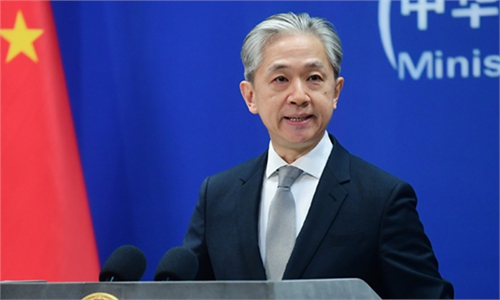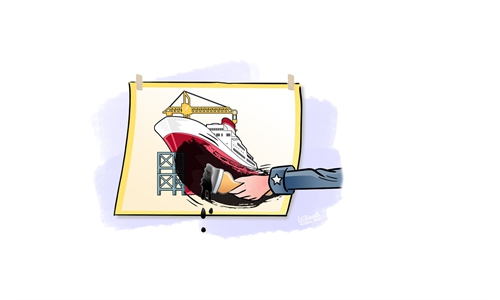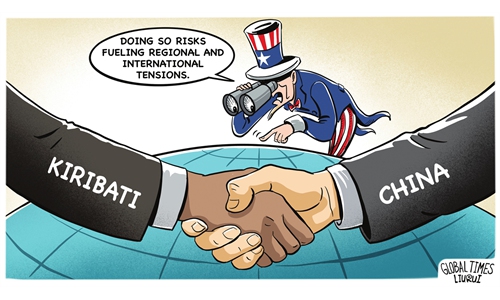
Illustration: Liu Xiangya/Global Times
A recent theory claiming that a surge in China's exports has put "jobs around the world in jeopardy" reached its culmination after Chinese official data revealed that China's exports, measured in yuan terms, rose 10.3 percent year-on-year in January and February. Regardless of whether or not China's exports increase, Western media outlets can always find ways to smear China's economy. It seems they have largely lost the ability to objectively assess China's economic performance.Among the discussions surrounding how the Chinese economy performs, its exports have become a focus of media attention. As an interesting comparison, the New York Times published an article in August 2023 criticizing the Chinese economy, stating that a decline in China's exports can be seen as a major indicator of a "stalling economy," which poses alarming risks for economies around the planet.
However, on Tuesday - only several months later - the very newspaper published another article that once again criticized China, this time claiming an increase in China's exports has put jobs around the world in jeopardy. It's ironic that China's exports, no matter whether they increase or decline, can be used as an excuse to attack and smear the Chinese economy.
Vacillating between the "China collapse" theory and the "China threat" theory, some Westerners say China's expansion in the exports of steel, cars, consumer electronics and solar panels is coming partly at other countries' expense, stealing their manufacturing jobs. Nevertheless, these same people who formerly rebuked China because its exports were not strong enough said that a slowdown in China's economy would hurt, rather than help, the rest of the world.
Combining the rhetoric of the "China collapse" theory and "China threat" theory confuses many people. So, what exactly does China's economy look like?
It is not surprising that China's export sectors experienced a hard time last year in the face of multiple challenges such as the sluggish external demand, the rise of trade protectionism in the West and the "decoupling" maneuver of the US, but, if people look at the whole picture, official data showed that China's exports, measured in yuan terms, rose 0.6 percent year-on-year in 2023. There is no sign of a systemic risk in China's trade. What has collapsed is the "China collapse" theory, not China's export-oriented sectors.
China's merchandise trade in the first two months of 2024 hit a record high of 6.61 trillion yuan ($919 billion), up 8.7 percent year-on-year, beating forecasts and signaling a good start to the new year. Exports rose 10.3 percent to 3.75 trillion yuan while imports were up 6.7 percent to 2.86 trillion yuan.
With a rebound in China's exports, Western media and politicians seem to have hyped up a new round of the "China threat" theory. That stems from the fear of a rise in China's strength, because some companies in Western countries are concerned that competitors from China may seize their vested interests.
However, it is unfair to protect backward production capacity in some Western countries. A most likely consequence is that consumers have to accept higher prices. In addition, the industrialization process will also slow down.
According to UN standards, traded goods can be classified into three categories: capital goods, intermediate goods and consumer goods. China is a major player in intermediate goods trade. Official data show China has been the world's largest exporter of intermediate goods for 12 consecutive years. In 2023, the import and export of intermediate goods reached 25.53 trillion yuan, accounting for 61.1 percent of China's foreign trade value.
Intermediate goods include raw materials, semi-finished products and components. As China pursues modernization through high-quality development, innovation driven by sci-tech progress has become a new growth engine for the country's economy.
Now, the country exports more and more high value-added industrial products, including core components and electronics parts, to other countries in the global supply chains. At a time when the restructuring of the global industry chain seems to have accelerated, China's exports of intermediate products have played a positive role in stabilizing the global industrial chain.
Some countries in Asia are in a stage of rapid industrialization. Before these countries establish complete industrial chains, their demand for imported intermediate products is huge. China and these countries have the potential to further strengthen cooperation. From the perspective of these countries, China's exports of intermediate goods represent opportunities for further industrialization rather than threats to their manufacturing jobs.
The "China threat" theory has turned into a threat to the global economy and its industrialization process. However, as long as we combine the interests of the Chinese economy with common interests of the world, the "China threat" theory would end up becoming a "China opportunity" theory.
The author is a reporter with the Global Times. bizopinion@globaltimes.com.cn



